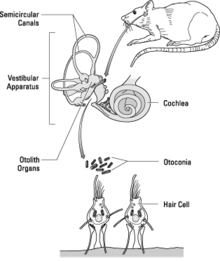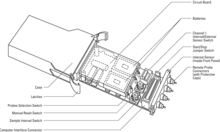STS-65
Scientists from the European Space Agency (ESA), Canada, France, Germany and Japan collaborated with NASA on the IML-2 mission to provide the worldwide science community with a variety of complementary facilities and experiments.
In life sciences research, a reduction of gravitation's effect allows certain characteristics of cells and organisms to be studied in isolation.
Other payloads on this mission were: Advanced Protein Crystallization Facility (APCF), Commercial Protein Crystal Growth (CPCG), Air Force Maui Optical Site (AMOS) Calibration Test, Orbital Acceleration Research Experiment (OARE), Military Application of Ship Tracks (MAST), Shuttle Amateur Radio Experiment-II (SAREX-II).
The second in the series of International Microgravity Laboratory payloads (IML-2) was launched on the Space Shuttle Columbia's STS-65 mission on 8 July 1994.
Kennedy Space Center (KSC) sponsored the PEMBSIS experiment, designed to study plant embryogenesis in microgravity.
They contain otoliths (or otoconia), calcium carbonate stones, which are deposited on a gelatinous membrane that lies over the sensory hair cells.
The pull that gravity exerts on the otoliths is sensed by the hair cells, and information about the gravitational stimulus is transmitted to the brain via connecting nerve fibers.
The experiment was designed to determine whether otolith production and development of otolith-associated receptor cells and nerve fibers may be altered in the microgravity environment of space.
The experiment also sought to determine the level of artificial gravity stimulus needed to counteract any negative effects of space flight.
The objective of the plant embryogenesis (PEMBSIS) experiment was to evaluate whether space flight affected the pattern and developmental progression of embryonic daylilies from one well-defined stage to another.
Four adult Japanese rice fish (2 males and 2 females) were included in the Aquatic Animal Experiment Unit, with an oriented light to help them find the correct posture for mating in the absence of gravity.
This species was selected for study partly because the vestibular system of very young newts undergoes most of its development in a period of time equivalent to the planned mission duration.
Newt adults and larvae were housed in cassette-type water tanks in the Aquarium Package within the Aquatic Animal Experiment Unit (AAEU), developed by NASDA, the Japanese space agency.
A slow rotating centrifuge microscope and camera system, Nizemi, developed by DLR (formerly DARA), the German space agency, was used to examine and videotape the behavior of the jellyfish ephyrae and polyps at up to 15 varying levels of G and at a temperature of 28 °C (to facilitate swimming activity).
The PEMBSIS experiment used hardware provided by the National Space Development Agency (NASDA) of Japan.
As part of the NASDA Life Science Cell Culture Kit, this experiment used six petri-dish-like Plant Fixation Chambers (PFCs).
The PFCs allow plant cells exposed to space flight to be fixed in orbit by insertion of a chemical fixative via syringe through a septum port.
[8] On flight days 6, 8, and 11, the crew carried out video observations of newt eggs to document the rate of development.
On both the fifth and ninth days of flight, an adult newt was found dead, causing the loss of some eggs because of contamination.
To provide a comparison between flight-fixed and ground-fixed groups in the PEMBSIS experiment, the crew fixed some cultures shortly before landing.
Some of the larvae were fixed and preserved for later analysis, while some were tested to estimate how space flight affected the gain of the otolith-ocular reflex and measure the otolith volumes and areas of associated sensory epithelia.
Some of both the flight and control jellyfish were allowed to form clones, which were then examined for arm number and other structural differences.
[9] Ephyrae that developed in microgravity had significantly more abnormal arm numbers as compared with 1-G flight and ground controls.
The second dead newt was found by Donald A. Thomas late on Sunday 17 July 1994 while checking the tanks, however the second death was called "peculiar" in a comment by Dr. Michael Wiederhold, a scientist on the ground.
[11] This article incorporates public domain material from websites or documents of the National Aeronautics and Space Administration.





